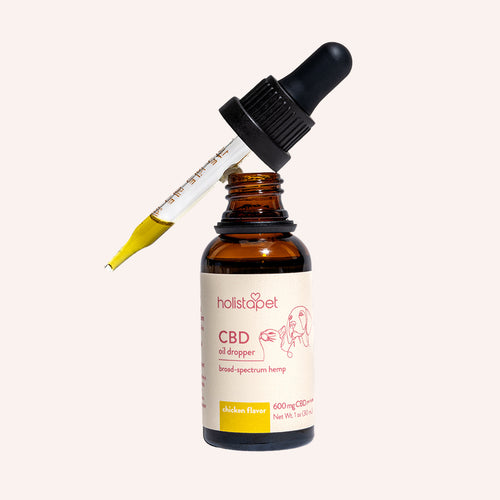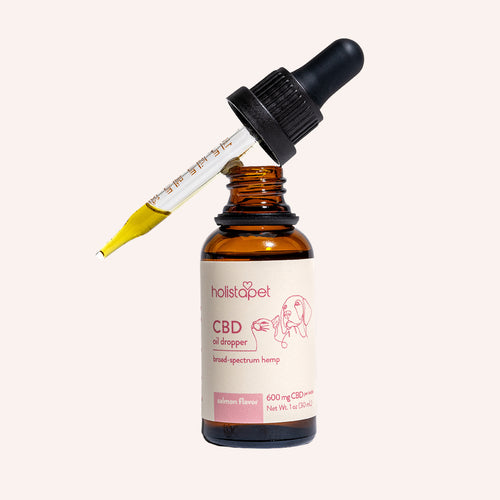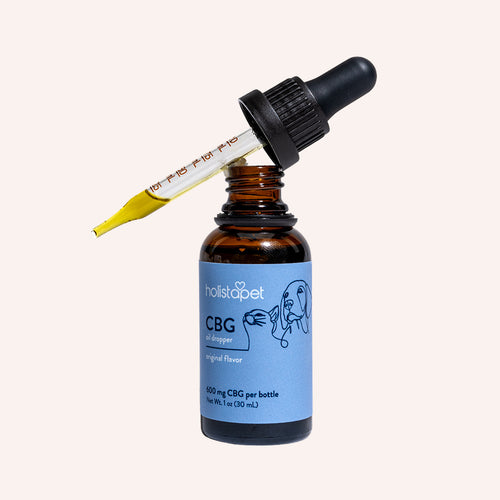Dog crate anxiety can turn a simple nap spot into a scene of chaos. Some canine pets see the crate as a limiting cage instead of a safe space, and that POV can leave them upset.
But with the right approach and plenty of patience, even the most anxious pooch can learn to feel at ease inside their crate. Gentle coaching, cool rewards, and positive energy can all help your canine companion understand that their den isn’t a punishment at all. It’s their cozy room to rest and dream.

What Is Dog Crate Anxiety?
Crate anxiety happens when a pup feels trapped or nervous inside their crate. It builds when the animal doesn’t see the crate as a safe escape but as a barrier. It’s basically an emotional response to confinement.
Some dogs bark or chew because they associate the crate with distress or being alone. Others show anxious behaviors like pacing or whining when the door closes. With the right crate training, most canines forget the panic and learn that their crate means comfort and security.
Common Signs of Crate Anxiety in Dogs
Crate anxiety can look different from one dog to another, but the clues usually stand out. Spotting these early helps prevent bad habits from growing. Here's what you should keep an eye out for:
- Excessive Barking, Whining, or Howling. Dogs may make noise to express agitation or ask for release.
- Scratching or Biting at the Crate. A dog might try to escape when feeling trapped.
- Drooling, Panting, or Pacing. These are physical signs of agitation.
- Accidents or Refusal to Enter the Crate. Fearfulness often shows through avoidance or loss of control.

What Causes Crate Anxiety in Dogs?
Dog crate anxiety often starts from bad experiences or poor habits. Some pets dislike enclosures because they're reminded of being isolated or trapped. Others never learned that a crate can be a good place for relaxation. Understanding the cause helps fix the behavior and build trust. Let's tackle these common causes next:
- Past Trauma or Negative Crate Associations
- Separation Anxiety From Their Owner
- Lack of Crate Training or Sudden Confinement
- Overstimulation or Energy Build-Up Before Crating
Past Trauma or Negative Crate Associations
Some dogs develop crate anxiety after past experiences that scared or confused them. A rescue dog might remember being confined for too long. Another may link the crate to punishment. Those negative associations stick, making the crate feel like a threat instead of a safe space.
To rebuild trust, move slowly and stay patient. Keep the door open, use soft blankets, and toss in snacks during quiet moments. The goal is to replace fear with comfort. Over time, your dog starts to see the crate as a peaceful room free from stress.
Separation Anxiety From Their Owner
Many dogs with crate anxiety feel scared when their favorite person isn’t nearby. The crate becomes a symbol of being left behind. That fear of separation often leads to vocalizing, drooling, or digging as they try to escape and reunite with you.
To ease that dread, keep crate time low-key. Avoid big goodbyes or emotional exits. Leave the room for short periods, then return calmly. With practice, your buddy learns that you always come back.
Lack of Crate Training or Sudden Confinement
When a dog is suddenly placed in a crate without earlier preparation, confusion sets in fast. They don’t understand what’s happening or why they’re being confined. This leads to whining, chewing, or restlessness. Crate anxiety often grows from these rushed introductions.
Start small with short training sessions. Keep the door open, toss in treats, and let your pup explore freely. This helps create positive associations instead of fear. Over time, the crate becomes a familiar, secure spot where your dog can lie comfortably and feel at ease even when alone.
Overstimulation or Energy Build-Up Before Crating
A pup full of excitement and unused energy often struggles with crate time. When a dog hasn’t had enough exercise, confinement feels like punishment. That extra energy can show up as barking, burrowing, or chewing the crate out of frustration.
A good play session or walk before crating helps release that tension. Let your pup run, sniff, and stretch their legs first. Once they’re relaxed, the crate feels like a natural spot to rest. A content body leads to a content mind, and that makes crate time easier for both of you.
Why Crate Training Can Still Be Positive
Crate training gets a bad rap, but when done right, it builds trust instead of fear. The crate becomes a safe space where your canine companion can unwind or enjoy quiet time. It’s not about forcing your dog inside but teaching them that this spot belongs to them.
Positive crate training relies on patience, routine, and rewards. Keep sessions short, peaceful, and consistent. Toss in treats, praise relaxed behavior, and never use the crate for punishment. With time, most dogs begin to feel confident and content, turning crate time into a peaceful daily habit.
How to Help a Dog With Crate Anxiety
Helping a dog with crate anxiety takes time, patience, and a gentle touch. Start by building small moments of zen inside the crate instead of forcing long stays. Keep things relaxed, use treats, and make the crate a cozy nook your pup chooses willingly. Try these steps:
- Start Slow With Short Crate Sessions. Begin with just a few minutes, then slowly add time.
- Keep the Door Open and Make It Inviting. Let your dog wander in and out freely.
- Reward Calm Behavior With Treats or Praise. Positive association builds trust.
- Avoid Using the Crate as Punishment. The crate should always feel safe and welcoming.
Natural Remedies for Dog Crate Anxiety

Natural remedies can help calm anxious pups without harsh methods. These gentle options support balance and relaxation while reinforcing positive crate habits. Combined with patient instruction, they make the crate a comfortable space instead of a stress trigger.
- CBD for Dogs – Natural Support for Calm and Relaxation. CBD oil helps ease stress and promotes balance without sedation. Good news: HolistaPet offers top-quality CBD for dogs in treat, chew, oil, and capsule forms. We use broad-spectrum CBD, meaning no THC. All our products are natural, vegan, dairy-free, vet-approved, lab-tested, and proudly made in the USA.
- Calming Herbs. Chamomile and valerian root can help ease tension and restlessness in anxious dogs. That's why they're included in our Calming CBD dog treats. These herbs offer light relaxation and may help your pup settle more comfortably during crate time.
- Soothing Music or White Noise Machines. Calming sounds can block out sudden noises that may trigger stress. A quiet playlist or white noise machine helps create a more peaceful environment for your dog to relax in.
- Consistent Daily Exercise and Playtime. Regular physical activity helps release excess energy and reduces anxiety. A well-exercised dog is more likely to feel calm and ready to settle when it’s time to rest in the crate.
- Comfort Items. Placing soft blankets, favorite toys, or an item that smells like you inside the crate can provide reassurance. These familiar comforts help your dog feel safe and secure in their space.
How Long Does It Take to Overcome Crate Anxiety?
Every dog’s timeline looks different. Some pups adjust in a few days, while others need several weeks to feel calm in their crate. Age, background, and past experiences all play a role in how fast progress happens.
Consistency matters most. Keep training sessions short, positive, and predictable. Praise small wins, ignore setbacks, and never rush the process. With time and patience, most dogs replace fear with trust. The moment your pup lies down quietly in their crate, you’ll know real progress has begun.

When to Consult a Professional
If your pup shows signs of panic, self-injury, or constant distress, a professional can help. Certified trainers or canine behaviorists know how to design plans for canines who struggle with enclosures.
A veterinarian can also check for health concerns that might add to the problem. They may suggest natural calming options or refer you to an expert in behavior. Getting guidance early prevents habits from worsening and helps your dog build confidence faster in their crate.
Preventing Crate Anxiety Before It Starts
The best way to handle dog crate anxiety is to stop it from forming in the first place. Early, positive crate experiences teach puppies that the crate means comfort instead of mere confinement. With consistency and care, new dogs can grow to love their little den. Here are some prevention tips:
- Introduce the Crate Early With Positive Experiences. Let your puppy explore it freely and pair it with rewards.
- Keep Crate Time Short and Comfortable. Gradual sessions prevent worry or boredom.
- Make the Crate Part of Normal Life (Not Isolation). Keep it in a room where your dog can see and hear you.
Final Thoughts – Helping Dogs Feel Safe in Their Crate
Your dog's crate anxiety doesn’t have to last forever. With time, patience, and gentle training, most pups learn that their crate is a peaceful space indeed. Turning it into a safe spot helps reduce anxious behaviors and gives your pup a sense of calm.
Positive reinforcement, trust, and natural remedies all play a part in creating that comfort. If your dog needs extra help relaxing, try calming products like HolistaPet’s CBD for dogs. With care and compassion, every crate can become a cozy haven your pup truly enjoys.


 CBD Oil for Dogs - Fast Acting
CBD Oil for Dogs - Fast Acting
 Chicken Flavored CBD Oil For Dogs - Easy Dose
Chicken Flavored CBD Oil For Dogs - Easy Dose
 Salmon Flavored CBD Oil For Dogs - Highly Rated
Salmon Flavored CBD Oil For Dogs - Highly Rated
 CBG Oil for Dogs and Cats - Loved by Thousands
CBG Oil for Dogs and Cats - Loved by Thousands




Leave a comment
All comments are moderated before being published.
This site is protected by hCaptcha and the hCaptcha Privacy Policy and Terms of Service apply.